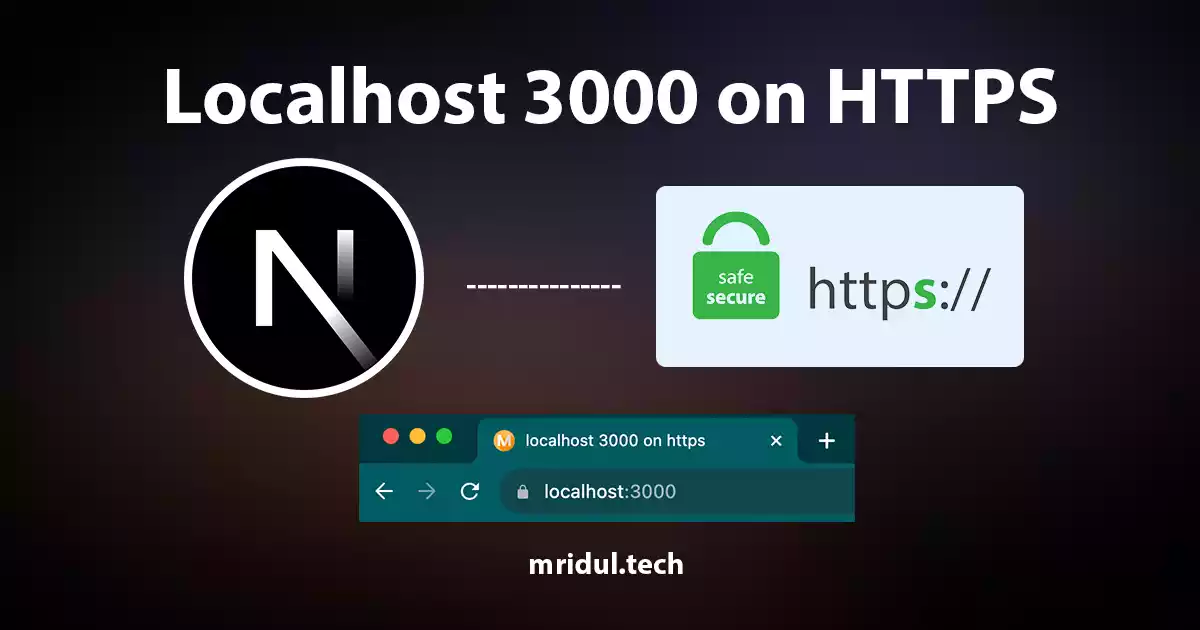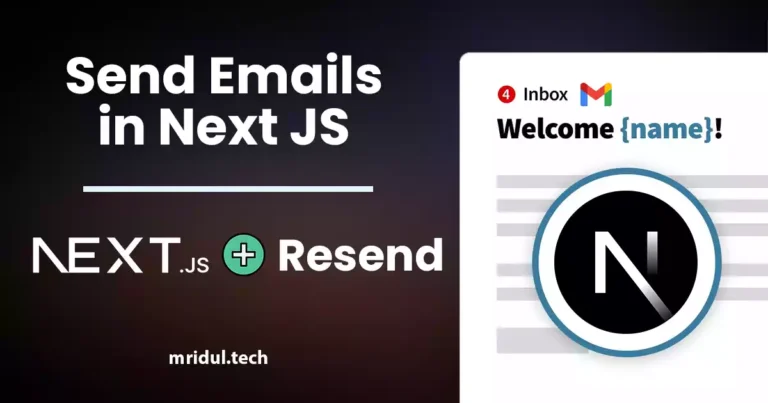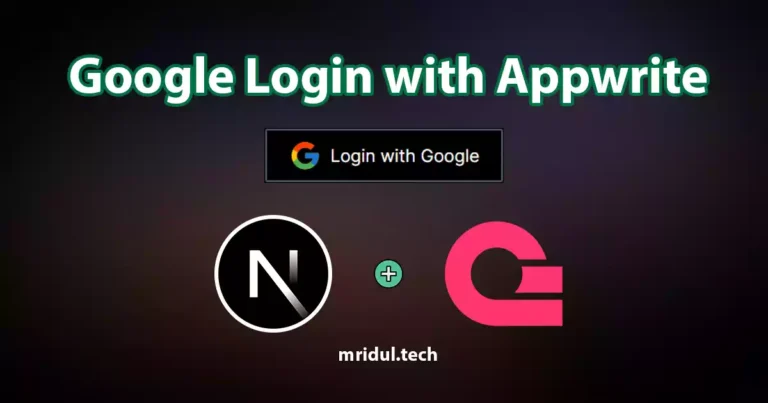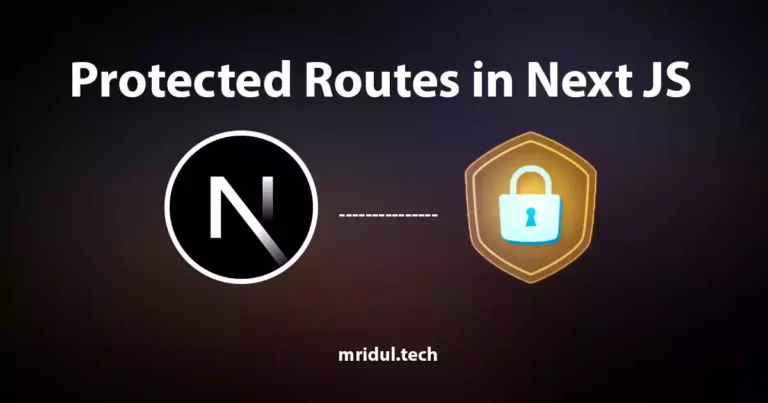How to run localhost 3000 on https in Next JS
Mridul Panda
Oct 20, 2023
·2 Min Read

In the ever-evolving world of web development, having a secure local development environment is crucial. If you’re working with Next.js and need to run localhost on HTTPS with port 3000, you’re in the right place. In this comprehensive guide, we will walk you through the process step by step, ensuring you have a secure and efficient setup. So, let’s dive into how to run localhost 3000 on HTTPS in Next JS!
Why Use Localhost 3000 on HTTPS?
Security: Running your Next.js app on HTTPS ensures that your data remains encrypted during development. This is crucial when dealing with sensitive information or when your application interacts with external APIs over secure connections.
Realism: By using HTTPS in your local environment, you can mimic the production environment more accurately, reducing potential issues that may arise when switching to HTTPS in the production phase.
Also Read: How to Use SVG in Next JS?
Setting Up Your Local Development Environment
Create a New Next.js App: Create a new Next.js project by running the following command:
npx create-next-app my-next-appUpgrade Next JS Project: If you already have a Next JS Project upgrade the Next JS package to the latest version. To upgrade a Next JS project to the latest version run the following command
npm i next@latestInfo: Make sure your Next Package version is 13.5.0 or above. To run localhost 3000 on https you need Next JS version 13.5.0 or above
Also Read: How to Generate Sitemap in Next JS?
Setting up Localhost 3000 on HTTPS
You need SSL certificates for HTTPS. For this, we will set up a new dev command in our project. Add a new command in the package.json
"dev-https": "next dev --experimental-https",Tip: --experimental-https is the tag to enable https
Now run the command npm run dev-https. It will ask for some permissions so allow the permissions. Now navigate to https://localhost:3000. And you will see the localhost running on https.

Conclusion
In this guide, we’ve shown you how to run localhost 3000 on HTTPS in Next JS. By following these steps, you’ll have a secure development environment for your Next JS projects. Remember, a secure environment not only protects your data but also ensures smoother development and testing processes.
Give it a try, and you’ll quickly see the benefits of running localhost on HTTPS. Happy coding!
You may also like
Next JS vs React: Which One Should You Choose?

Aug 30, 2025
·4 Min Read
When it comes to building web applications, React is one of the most popular frameworks out there. But with the emergence of Next JS, many developers are left wondering which one they should choose. In this article, we’ll see Next JS vs React to help you decide which one is best for your project. Next.js […]
Read More
How to add Styled components in Next.js App router

May 11, 2024
·4 Min Read
Styled components have become a popular choice for styling React applications due to their simplicity and flexibility. When it comes to integrating styled components into a Next.js application, it’s essential to understand how to leverage them effectively within the app router. In this guide, we’ll explore step-by-step how to add styled components to a Next.js […]
Read More
How to add Google Web Stories in Next JS

Dec 14, 2023
·10 Min Read
In the fast-paced digital world, user engagement is key to the success of any website. One effective way to captivate your audience is by incorporating Google Web Stories into your Next JS website. These visually appealing and interactive stories can make your content more engaging and shareable. In this comprehensive guide, we’ll walk you through […]
Read More
How to send Emails in Next JS for Free using Resend

Nov 10, 2023
·7 Min Read
Sending emails in web applications is a crucial feature, and in this article, we will explore how to send Emails in Next JS for free using Resend. Next JS is a popular framework for building React applications, and Resend is a handy tool for email integration. By the end of this guide, you’ll have the […]
Read More
How to add Google Login in Next.js with Appwrite

Nov 01, 2023
·7 Min Read
Are you looking to enhance user authentication in your Next.js application? Integrating Social Login with Appwrite can be a game-changer. Add Google Login to your Next.js app with Appwrite. This article will guide you through the process, and practical tips to add Google Login in Next.js with Appwrite. GitHub Code: Google Login in Next.js with […]
Read More
How to add Protected Routes in Next JS

Oct 28, 2023
·5 Min Read
In the world of web development, security is paramount. Whether you are building a simple blog or a complex web application, protecting certain routes and pages from unauthorized access is a crucial step. In this comprehensive guide, we will walk you through the process of adding protected routes in Next JS, ensuring that your web […]
Read More


